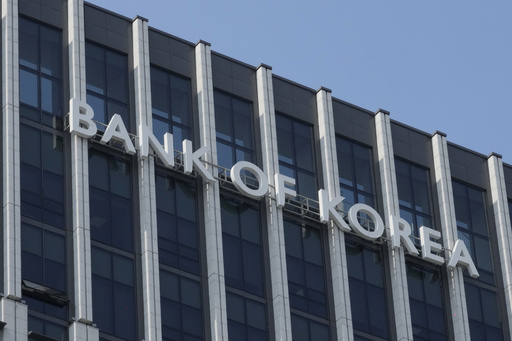SEOUL, South Korea — In a significant shift in monetary policy, South Korea’s central bank reduced its key interest rate on Friday, marking the first decrease in more than four years. This decision came amid mounting pressures to rejuvenate a sluggish economy, which ultimately outweighed concerns regarding the country’s rising household debt levels.
The Bank of Korea announced a reduction of the policy interest rate by a quarter percentage point, bringing it down to 3.25%. This change follows a meeting of the monetary policy committee and is the first attempt to reduce borrowing costs since May 2020, a period when the economy was grappling with the impacts of the COVID-19 pandemic.
Prior to this, the central bank had raised rates by a quarter percentage point in August 2021 due to worries about inflation and increasing household debt, influenced significantly by soaring property prices. After this increase, the rates remained frozen for over three years.
In an official statement, the central bank indicated that domestic demand is recovering slowly, which has impeded overall economic growth. They noted that a reduction in rates was feasible as inflation appears to be stabilizing, and the pace of household debt growth is easing, particularly as the housing market in the greater Seoul area cools off.
During a press conference, Governor Rhee Chang-yong mentioned the remaining capacity for potential further cuts in rates, underscoring that house prices in the capital region saw a significant slowdown in growth in September compared to August. Furthermore, the country’s consumer price inflation declined to 1.6% in September, coming in below the bank’s target of 2%.
However, Rhee cautioned against prematurely concluding that the financial situation is on solid ground, suggesting that the bank will adopt a cautious approach toward any additional rate cuts. “We will decide after monitoring the stability in financial markets,” he stated. He characterized the recent rate reduction as a “hawkish cut,” indicating a continued preference for tighter monetary conditions.
In light of the sluggish growth, government officials have urged the central bank to consider lowering borrowing costs. South Korea’s finance minister, Choi Sang-mok, expressed his support for the decision during a parliamentary hearing, stating he “respects and welcomes” the rate cut.
The Bank of Korea noted that the nation’s trade-reliant economy faces numerous uncertainties, including escalating tensions in the Middle East, which could impact fuel prices, currency fluctuations, and public utility rates. It further emphasized that the trajectory of economic growth depends on the recovery pace of domestic demand, the economic circumstances in significant partner countries, and the trends in information technology exports.
The bank projects that growth in house prices within the metropolitan area and the expansion of household debt will likely slow gradually due to enhanced macroprudential measures designed to safeguard the financial system’s stability. Nevertheless, it acknowledged the necessity of monitoring potential risks stemming from the decreased base interest rate and its implications for household debt levels.
For 2023, the Bank of Korea forecasts a growth rate of 2.4% for the South Korean economy, a slight decline from the previous year’s estimate of 2.6%. As of the end of September, household loans from banks amounted to approximately 1,135.7 trillion won (around $841 billion), reflecting a growth of about 5.7% during the month, a notable decrease from the 9.2% increase recorded in August. While exports have shown signs of improvement, job growth remains tepid, attributed to sluggish conditions in the construction sector and other industries, according to the bank’s insights.
